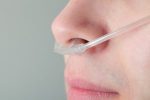IPF Alters Response of Cells With Role in Lung Repair, Study Shows

Injuries to the lung from diseases like idiopathic pulmonary fibrosis (IPF) can trigger an abnormal cell response that affects lung cell repair and is associated with excessive tissue scarring, a study showed.
Scientists noted that further studies are needed to determine whether this process is reversible, which may lead to effective IPF therapies.
The study, “Human alveolar type 2 epithelium transdifferentiates into metaplastic KRT5+ basal cells,” was published in the journal Nature Cell Biology.
In IPF, scarring of the lungs, or fibrosis, can occur when an injury leads to an abnormal healing response, characterized by the excess buildup of proteins like collagen and other components of the extracellular matrix (ECM) — the network of molecules that surrounds and supports cells.
Although fibroblast cells that generate ECM components are known to promote fibrosis, many details of the disease’s underlying mechanisms remain unclear.
Human alveolar type 2 cells (hAEC2s) line the tiny air sacs in the lungs, or alveoli. These cube-shaped cells secrete fluid to coat the flat-shaped alveolar type 1 cells (AEC1s), which are responsible for gas exchange. Upon tissue injury, AEC2s can transform, or differentiate, into AEC1s, regenerating the alveoli.
In IPF, however, hAEC2s are lost, while at the same time, metaplastic alveolar KRT5+ basal cells appear. Importantly, the extent to which KRT5+ basal cells appear in the alveoli was found to directly associate with mortality in people with IPF.
Studies in mice showed that these metaplastic KRT5+ cells do not come from AEC2s, but from other progenitor cells following an injury or viral infection. Whether metaplastic KRT5+ cells come from the same progenitor cells in human airways is unknown.
Researchers at the University of California, San Francisco (UCSF), conducted a series of experiments to determine the source of metaplastic KRT5+ cells associated with IPF.
First, the team co-cultured hAEC2s with normal adult lung cells to generate a 3D organoid to simulate the lung environment. After 14 days, most organoids derived from this hAEC2–lung cell co-culture contained KRT5+ cells, suggesting that, unlike in mice, hAEC2s can differentiate directly into KRT5+ cells in vitro, meaning in a lab dish study.
To determine whether this process occurs in a living body (in vivo experiment], hAEC2s were transplanted into the lungs of mice with induced fibrosis. Like the organoid experiments, researchers found that hAEC2s differentiated into KRT5+ basal cells within their lungs.
“The first time we saw hAEC2s differentiating into basal cells, it was so striking that we thought it was an error,” Tien Peng, MD, the study’s senior author, said in a press release. “But rigorous validation of this novel trajectory has provided enormous insight on how the lung remodels in response to severe injury, and a potential path to reverse the damage.”
The team also found that hAEC2s co-cultured with cells from IPF patients differentiated into basal cells more quickly. Evidence indicated this was driven by the presence of a subset of disease-related fibroblast cells that produced high amounts of collagen.
Researchers then monitored the transition from hAEC2s to KRT5+ basal cells, finding a time-dependent loss of hAEC2 cells and gain of KRT5+ basal cells, along with the appearance of two distinct intermediate cell types carrying both hAEC2 and basal cell markers.
Previous studies have also identified intermediate cell populations in IPF lungs. Here, findings showed that intermediates derived from organoid hAEC2s resembled these IPF intermediates, suggesting “a direct trajectory from hAEC2s to basal cells through these intermediate cell types,” the researchers wrote.
An examination of lung tissue then showed that these intermediate cell populations were “extremely rare” in the alveoli of normal lungs. But in areas of moderate to severe injury in IPF lung tissue, most cells were these intermediate cells. Few intermediates were seen in areas with heavy fibrosis, with most cells being completely basal.
“The results strongly suggest that [intermediate] populations in vivo, similar to the population identified in our 3D organoids, appear as a function of alveolar injuries that result in [differentiation] of hAEC2s to basal cells,” the researchers wrote.
They also noted that this process of hAEC2 differentiation into basal cells is not exclusive to IPF.
“Alveolar metaplastic basal cells are also common in sections of scleroderma and COVID-19 lungs. The common finding of [intermediates] in hAEC2-derived organoids as well as hAEC2 xenografts [tissue samples], as well as in histologic analyses of fibrotic lungs, suggests that hAEC2s are a major source of metaplastic basal cells in diseases with severe alveolar injury,” the researchers wrote.
“Future studies are needed to clarify whether and under what circumstances hAEC2 reprogramming towards metaplastic basal cells in the alveoli is reversible, and whether other components of the fibrotic niche … are able to drive [this process],” they wrote.







